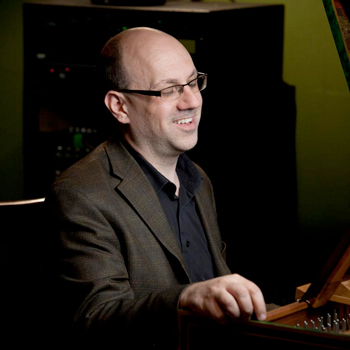by Daniel Hathaway

The program included two cantatas written and performed during the summer of 1725 (BWV Nos. 17 and 102), a motet (BWV 230), and a Missa Brevis (BWV 236). The final work, one of the composer’s Lutheran masses made up of recycled material from cantata movements, was a clever choice: Bach’s Mass in G includes music from the Cantata that was heard at the beginning of the program.
It’s not always the case that vocal soloists and choruses rise to the same level as their instrumental colleagues, but on Friday evening, sopranos Molly Netter and Madeline Apple Healey, countertenor Daniel Moody, tenors Brian Giebler and Jacob Perry, baritone David McFerrin, and Apollo’s Singers were every bit as polished as Apollo’s Fire itself.
Moody’s bright, strong voice, Netter’s rich but lithe singing, Perry’s warm tone and communicative skill, Giebler’s expressive and elegant phrasing, and McFerrin’s robust declamation distinguished both recitatives and arias in the two cantatas, and Healey and Moody contributed a lovely duet in the “Domine Deus” of the Mass. The chorus sang with incisive, well-blended tone, making easy work out of some tricky melismas and fugues.
Oboist Debra Nagy was featured in wonderful, nuanced solos in arias with Moody and Giebler, and concertmaster Olivier Brault took a virtuosic turn on the piccolo violin — a nasal-sounding little sister to the normal instrument — in Perry’s aria in Cantata 102. Joseph Gascho, often playing from one chamber organ while Peter Bennett presided over a second, coaxed expressive gestures out of the ensemble with a light hand.
The last two works were standouts. Bach’s motet Lobet den Herrn, BWV 230 (omitted from the translations insert) sets the shortest of the Psalms in nearly endless, ebullient counterpoint. When Bach pauses to change gears in the middle, Gascho allowed the music to relax but not to lose its energy, then subtly restored its forward progress. The final “Alleluia” was brisk and triumphant.
The final piece, the Mass in G, showed what a skillful tailor Bach was, altering existing music into seemingly new creations that still preserved the best features of the originals. Case in point: the “Gloria in excelsis” movement is unmistakably a refashioning of the “Nun danket alle Gott” chorale from Cantata BWV 79, but with such clever additions that it turns into an extraordinary fiddlefest in between the more familiar passages. The “Cum Sancto Spiritu” movement, refashioned from music in Cantata BWV 17, made a splendid conclusion to a brilliant concert.
Published on ClevelandClassical.com April 5, 2017.
Click here for a printable copy of this article



